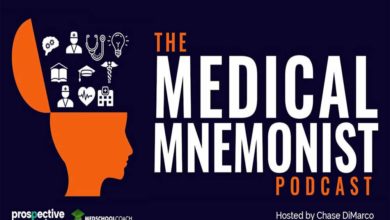Chase DiMarco covers the value of visual markers in mnemonics and memory tactics in general.
- [01:06] What are visual markers?
- [02:25] Why you should use visual markers
- [05:50] How to use visual markers
- [07:09] What not to do
- [08:38] Homework Exercise
What is a Visual Marker?
A visual marker is a goofy, quirky, or otherwise memorable image that draws your attention. The visuals in your head will be based on your own memories and experience and don’t always resemble the cartoonish representations of many platforms like Sketchy.
Creating visual mnemonics is a practice similar to learning a language. You may start a little slow, but as you develop your visual lexicon and reuse images and concepts, it becomes easier to do. Creating visual mnemonics allows us to make connections between ideas that seem abstract or define facts. Visuals have a more significant impact on our memory than words. We retain more information from fewer encounters with an image than with text. Also, pictures can communicate more with less. The use of images allows us to condense information into smaller, more manageable chunks that are easier to recall.
How Visual Mnemonics Work
Visual mnemonics are a more stimulating way of learning than traditional methods. Developing your own mnemonics, instead of using mnemonics developed by others, will have a greater impact. You can focus your efforts on material you struggle with, use markers relevant to your personality and past experiences, and create less generic, more compelling material. However, when time constraints are too prohibitive, premade mnemonic devices still provide some benefit. If you use premade visual aids, you may struggle to find comprehensive material on certain topics. In this case, you still want to create your own visual markers.
To develop strong visual mnemonics, personalize your pictures. Use images that your mind associates with a particular concept and add quirky, personal, and expressive elements to the image. Personalizing your images will lead to a better recollection of the pictures in the future. Steer clear of using family members, celebrities, and athletes in your visuals to avoid a strong emotional response. Instead, make use of TV, cartoon, and game characters that you are familiar with.
Homework
- Create a list of people/characters to use in your visuals
- Create a list of 10 or 20 concepts you are interested in and draw something you associate with the topics you listed
If you would like a headstart on the material in this miniseries, grab a copy of Read This Before Medical School. You can also listen to episodes 1 & 2 on Sketchy Medicine, the Picmonic episode, or the Memory Panel episode for a more in-depth exploration of visual mnemonics. Don’t forget to leave a rating!
Share your experiences, tips, and suggestions to [email protected]. Or you can directly reach out to Chase on LinkedIn, Twitter, or Instagram. Join the Medical Mnemonist Master Mind Facebook group and find our Blog posts, Podcasts, and other Resources at FreeMedEd.org!
